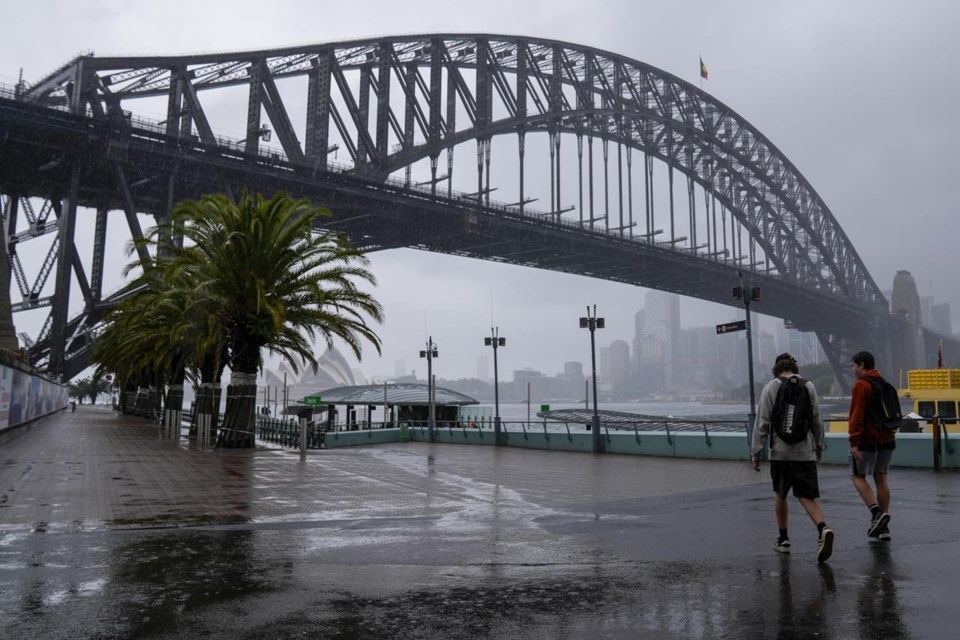SYDNEY (AP) — Australia’s largest city, Sydney, has been soaked by its wettest year on record with almost three months of expected above-average rain to spare.
The city of 5 million people beat its 1950 record of 2,194 millimeters (86.4 inches) at 12:30 p.m. on Thursday when 27.2 mm (1.07 in) of rain had fallen at the Observatory Hill rain gauge since morning, Australia’s Bureau of Meteorology said. Records at Observatory Hill go back to 1859.
Heavy rain is forecast to continue across Sydney and other parts of southeast Australia, peaking on Saturday.
The Bureau of Meteorology last month declared that a La Niña weather pattern, which is associated with above-average rainfall in eastern Australia, was underway in the Pacific.
The bureau forecast that the La Niña event may peak during the current Southern Hemisphere spring and return to neutral conditions early next year.
La Niña is the cooler flip side of the better-known drying El Niño pattern. La Niña occurs when equatorial trade winds become stronger, changing ocean surface currents and drawing up cooler deep water.
It is the third La Niña since 2019 became Australia’s hottest and driest year on record.
That year came to a catastrophic conclusion with wildfires fueled by drought that directly or indirectly killed more than 400 people, destroyed more than 3,000 homes and razed 19 million hectares (47 million acres) of woods, farmland and city fringes.
Sydney was among several southeast Australian cities that were shrouded in acrid wildfire smoke during the Southern Hemisphere summer of 2019-20.
Sydney had its wettest July on record this year after only two weeks, passing the 1950 record of 336.1 mm (13.2 in) on the way to a total of 404 mm (15.9 in).
March broke a 1942 record of 521.4 mm (20.5 in) when 554 mm (21.8 in) of rain fell.
The ongoing deluge will see rivers in New South Wales state swollen by moderate-to-major flooding, affecting towns including Tamworth, Dubbo and Bathurst, authorities said.
The Associated Press



